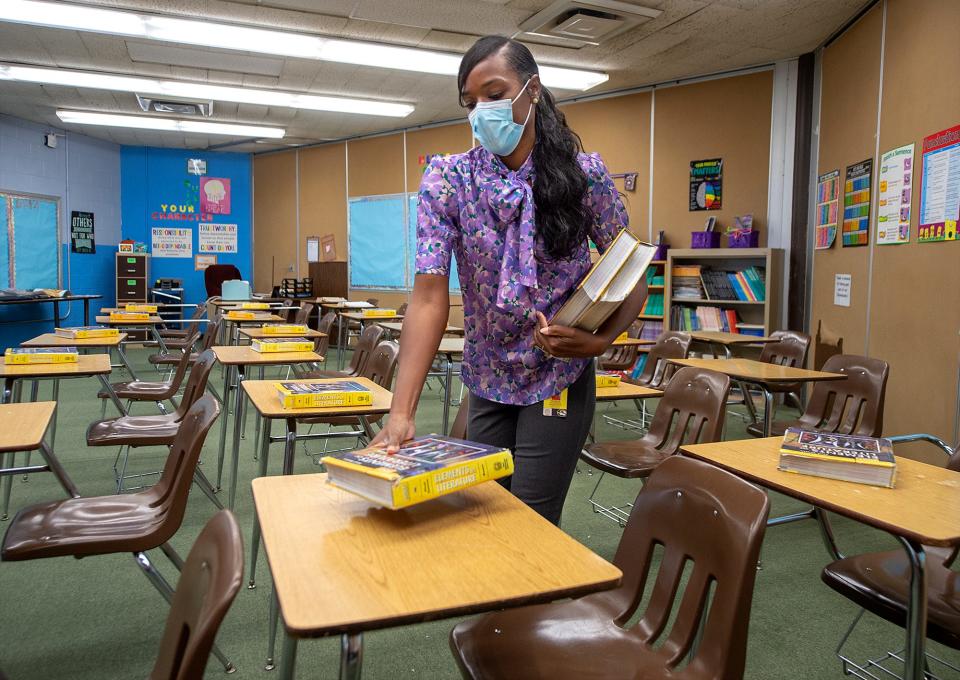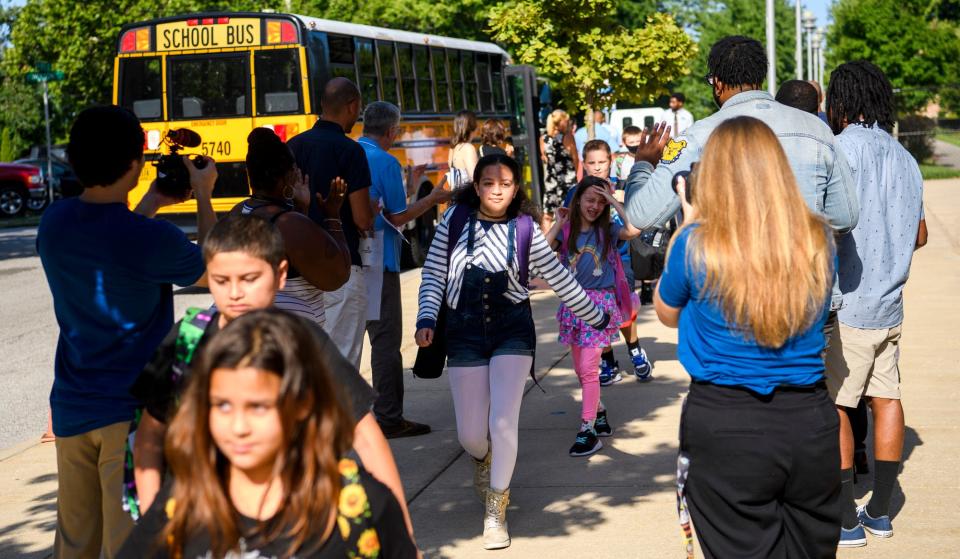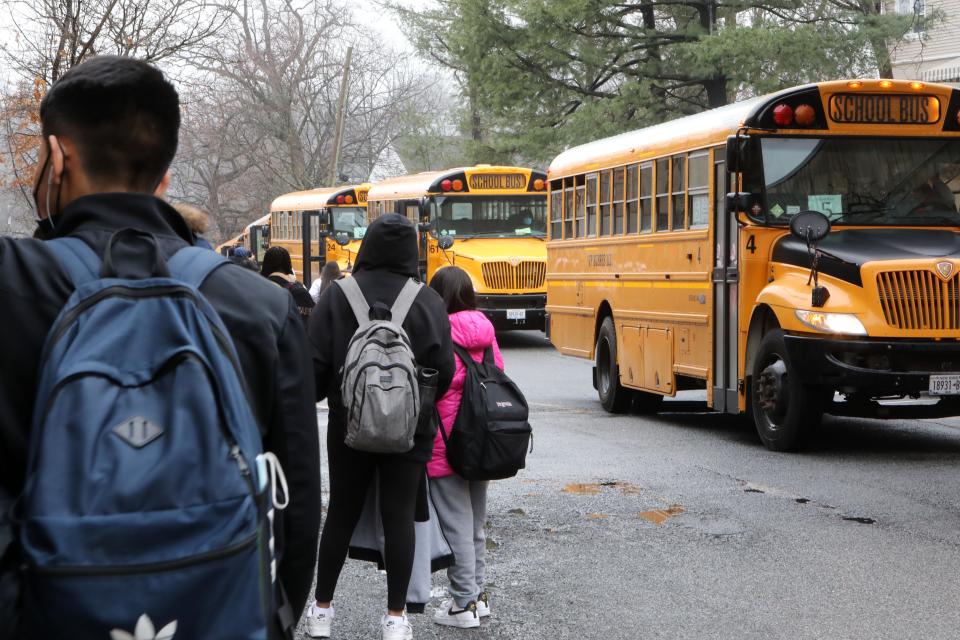US students are becoming more diverse. So why does segregation persist?

The student population in U.S. public schools has grown significantly more diverse, but segregation remains a persistent concern, a recent federal government study found.
The Government Accountability Office found that in the 2020-21 school year, more than a third of K-12 students attended schools where 75% or more of students were of the same race or ethnicity. About 15% of students went to schools where 90% or more of the students were of a single race or ethnicity, the study said.
EDUCATION: Achievement gap in standardized testing was growing. COVID-19 added fuel
Although school segregation is often associated with the civil rights-era integration battles of the 1950s and '60s, the report's findings are a window into how racial and economic divisions endure today.
"I think a lot of people think about segregated or divided schools of being a thing of the past or of being a Southern issue," said Jackie Nowicki, director of K-12 education at the GAO. "I think it's really important that people realize that we have racially and ethnically divided schools all across the country."

Where does school segregation persist?
The Midwest and the Northeast had the highest percentages of schools at which most students were of the same race or ethnicity. Most of those schools were primarily white, the report said.
The West had a large number of predominately Hispanic schools, the report noted. In the South, more schools were primarily Black or Hispanic than in other regions.
About half of white students attended a school where 75% or more of learners were white, the GAO study found. And about 25% of Black students and nearly 33% of Hispanic students attended a school where each held a clear majority for the same period.
Those stats come as white students represent a smaller share of the overall public school population. In the 1950s, white students made up nearly 90% of public school students, while Black pupils made up a little more than 10%, the report said, citing census data. Today, white students are less than 50% of the K-12 public school population.

What's driving school segregation?
Much of the consolidation of students by race can be linked to housing, school district secession and a history of discriminatory practices.
Building on pandemic damage: Distance learning affected disadvantaged students most. The teacher shortages are just piling on.
Nearly 70% of students today attend their neighborhood schools, which are primarily funded through state and local property taxes. So that means, for instance, a school in a lower-income area might have less money to pay teachers or pay for building maintenance compared with those in high-income areas.
About 14% of K-12 public schools made up mostly of one race or ethnicity are within 10 miles of a different school with a student body primarily of another race, the GAO study said.
School boundaries also have been influenced by redlining – a practice that used race to factor into whether residents could access federally backed home loans, according to a 2021 report from the Heritage Foundation, a conservative think tank.
Homes in the sections of town marked in red on federal maps – places where Black people usually lived – were perceived as hazardous areas to lend.
The communities faced underinvestment, researchers have said. And because school district lines are primarily based on nearby neighborhoods, many schools in redlined areas had less money to spend and were eventually considered to be underperforming.

Another factor affecting a school's socioeconomic and demographic characteristics is district secession, when one or more schools leave a school system to form a new one.
The GAO report identified 36 new school districts that seceded from existing ones from school years 2009-10 through 2019-20. The newly created districts tended to be more white and Asian, in addition to being wealthier.
What are the effects of school segregation?
An extensive body of research shows how school segregation impacts the fortunes of students and communities.
About 80% of students attending low-income schools are Black or Hispanic, the GAO report said. Both groups are more likely than white students to be sent to alternative schools for discipline. And high concentrations of students from low-income families were associated with worse academic outcomes.
Integration has been associated with a reduction in dropout rates and a narrowing of achievement gaps, the GAO's Nowicki said.
But attempts to integrate schools have been complex and controversial. Courts have mandated some school districts to bus children to schools outside of their neighborhoods to integrate them. Other districts went about the process voluntarily, but the often-contentious practice was phased out in some places after court challenges.
Magnet schools also were created to help desegregate schools, drawing students outside of their neighborhood to a special program such as arts or sciences. But the GAO report said nearly 1 in 4 magnet programs are made up of predominantly one race or ethnicity.
Although the federal government can still intervene in certain circumstances, Nowicki said districts also can move to make learning environments more diverse.
She said local education officials can look at the racial breakdown of each school in their districts and possibly change some of the attendance patterns.
Meanwhile, many Black parents say schools in the communities where they live are lacking.

About 45% of Black adults living in minority communities rate their public school negatively, according to a recent report from the Harvard T.H. Chan School of Public Health and The Robert Wood Johnson Foundation. About 25% of Black adults living in predominantly white areas gave their public school system the same rating.
Alonzo Plough, of the foundation, said segregation harms white communities and communities of color.
"Everybody is diminished by not coming into contact with other people," he said.
Tiffany Cusaac-Smith covers race and history for USA TODAY. Click here for her latest stories. Follow her on Twitter @T_Cusaac.
This article originally appeared on USA TODAY: Why school segregation persists despite growth in student diversity

